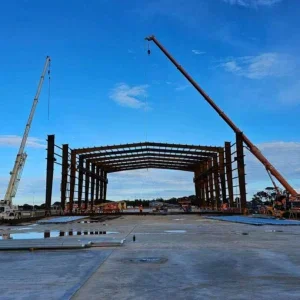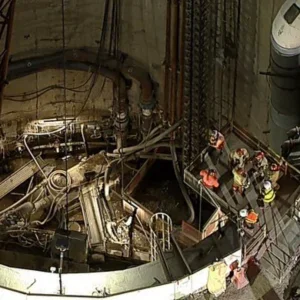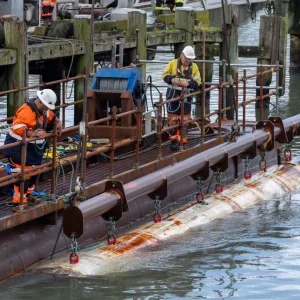Having holed through just over half way into its 17km drive at Dahuofang water transfer in China, Robbins’ TBM1 has stopped for a maintenance break before continuing the to bore the final 6.6km stretch of tunnel probably next month.
The 8.03m diameter TBM is one of a pair launched in August 2005 and have been driving through migmatite, andesite, syenite and compound granites with UCS values up to 109MPa.
While TBM1 holed through into an intermediate adit at the end of 2006, its sister – TBM3 – reached its adit last September. Both TBMs are fitted with 19” back-loading cutters with front-loading optional, which should assist lifespan and load capacity.
Over its first drive, TBM1 achieved a monthly average advance rate of 614m with a best month of 1058m.
The comparables for TBM3 are 508m and 860m, respectively, but the machine had to handle variable rock, often in mixed face mode. On its 13.6km drive, TBM3 had to handle rock UCS strengths varying from 19-70MPa as it cut through andesite, tufaceous and volcanic breccia, tuff, and tufaceous siltstone mixed with shale, sandstone and mudstone (T&TI, February 2006, p11).
Robbins was contracted to provide the full TBM kit for both machines, including backup systems and continuous conveyors – the first time they’ve been used for such tunnel excavation in China, it said. The TBMs have 900kW drive motors, three times more powerful than normal, which lets each machine only use one booster drive despite the length of the bores.
Dahuofang is one of the world’s largest water transfer projects, and will eventually have 85km of tunnel. The TBMs – plus a 8.03m diameter Wirth machine with an REI conveyor and Rowa back-up gantry, which started in December 2004 – will excavate the majority of the tunnels, the remainder being driven by drill and blast.







